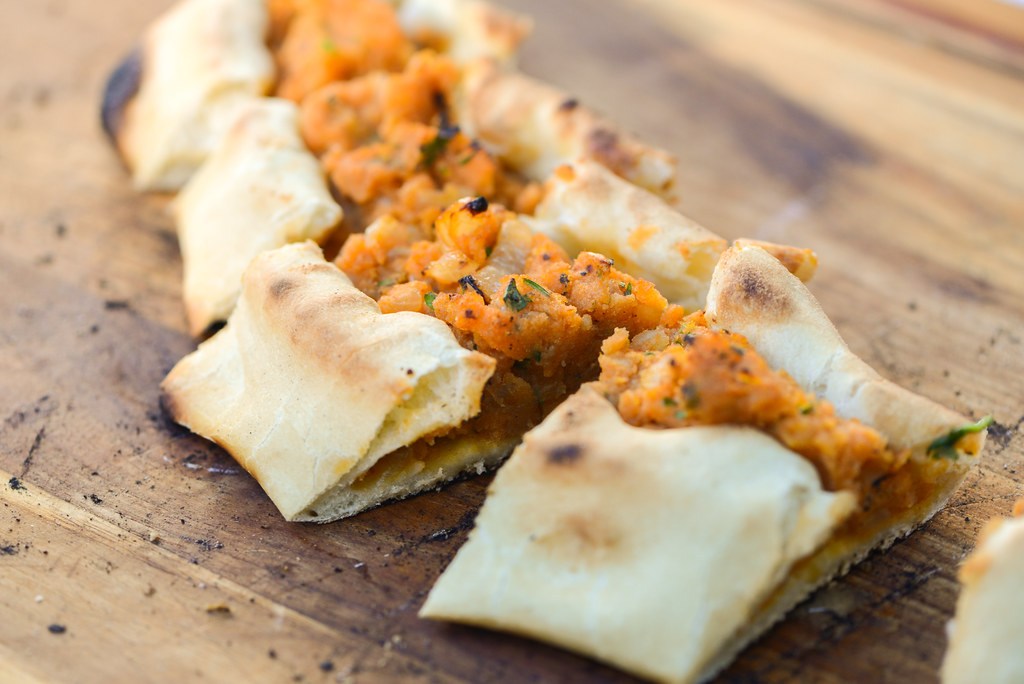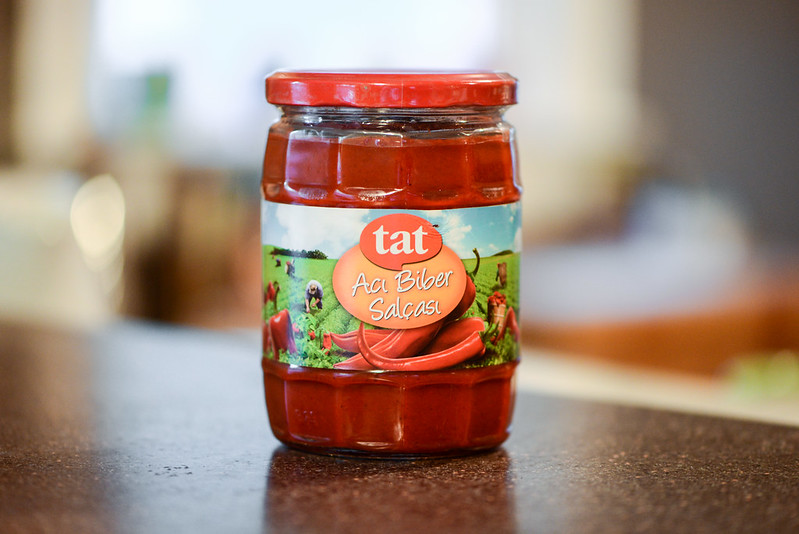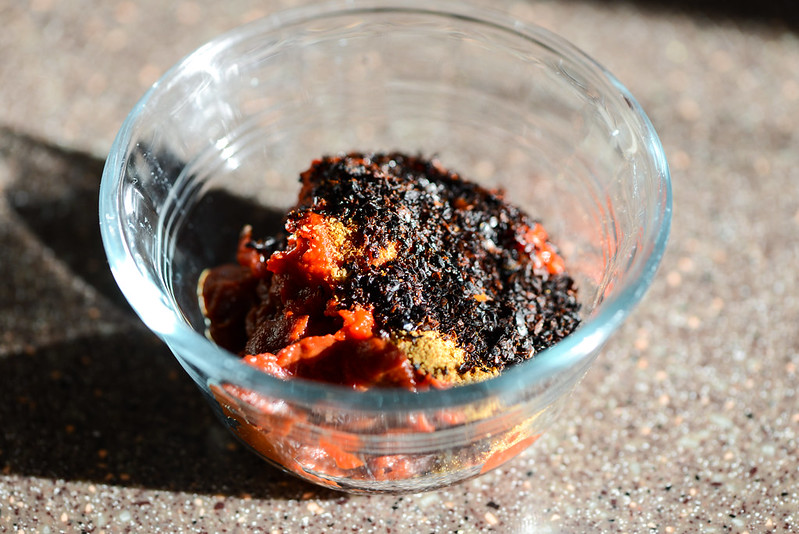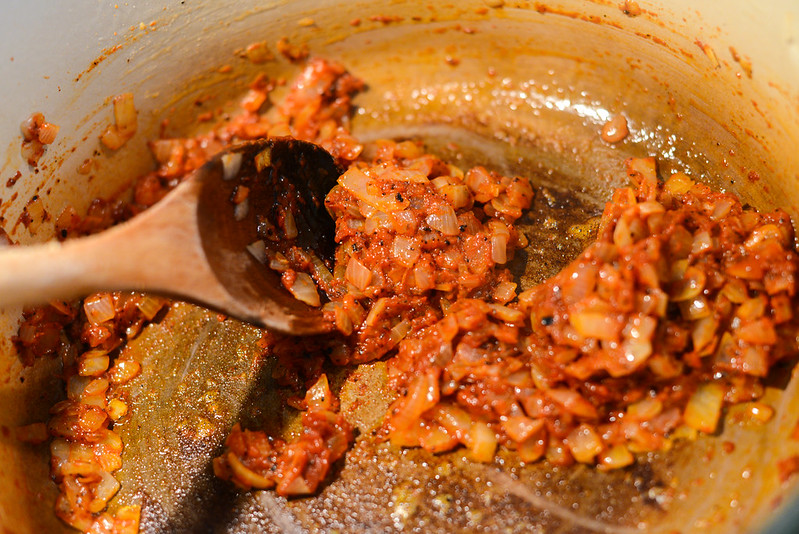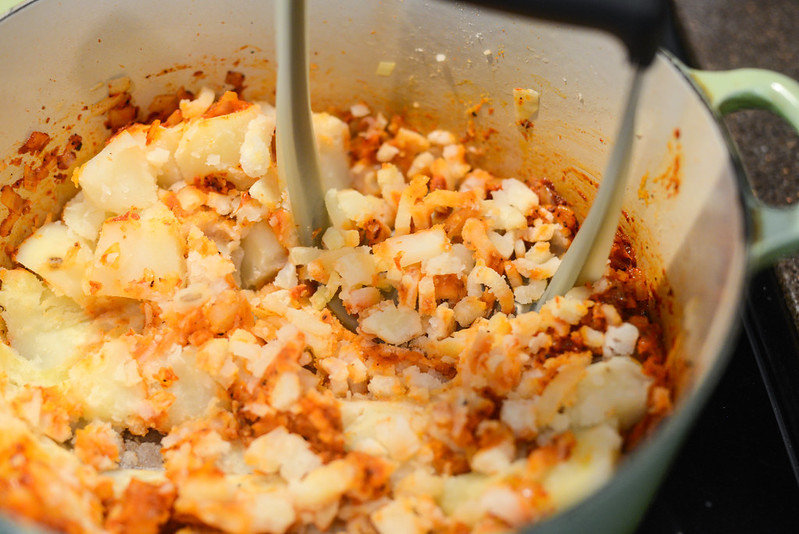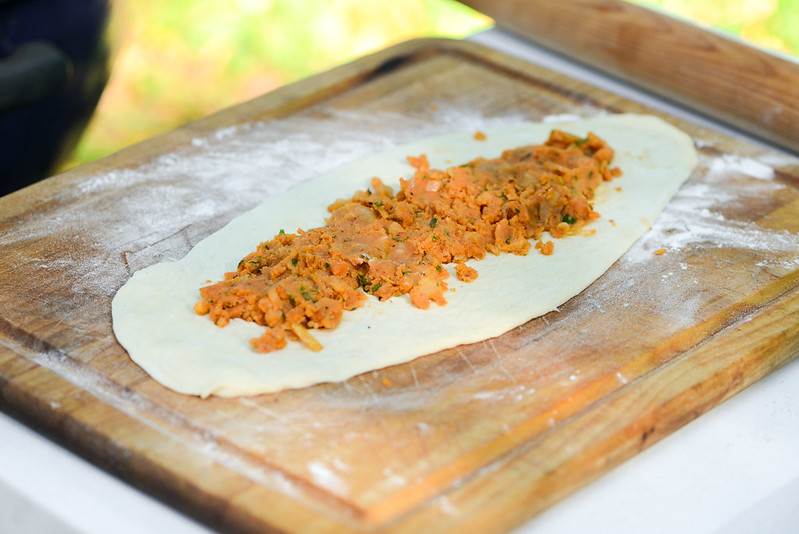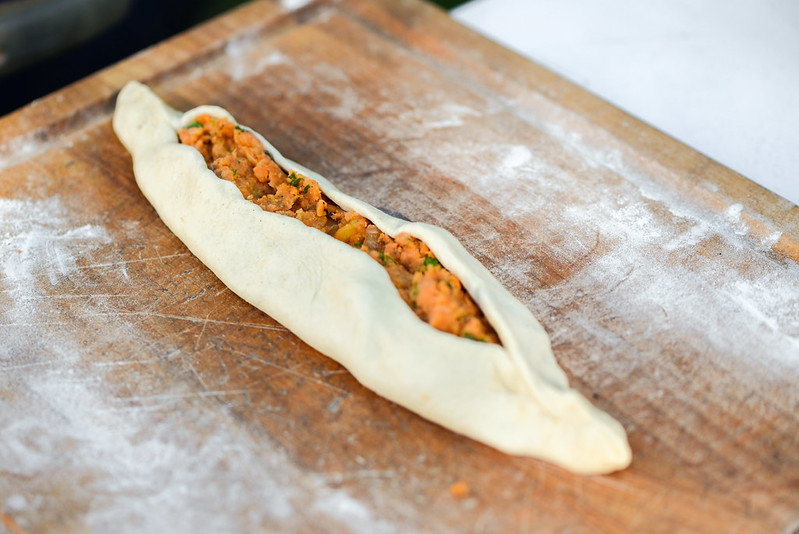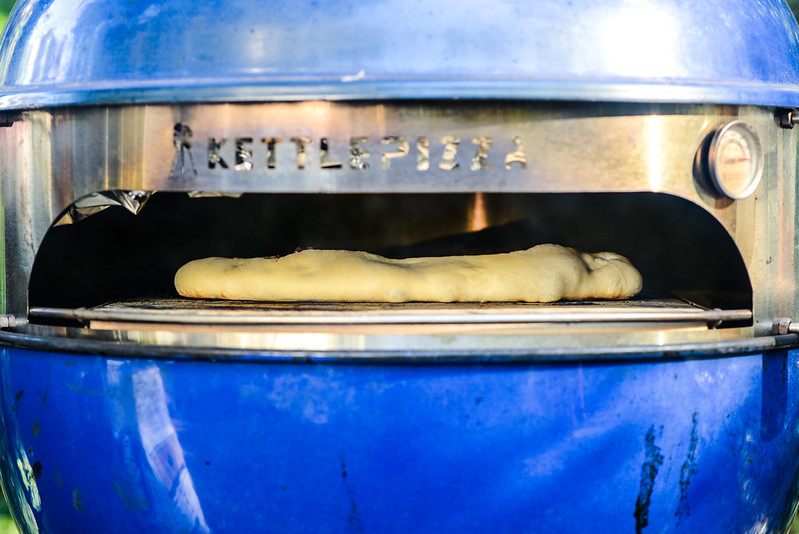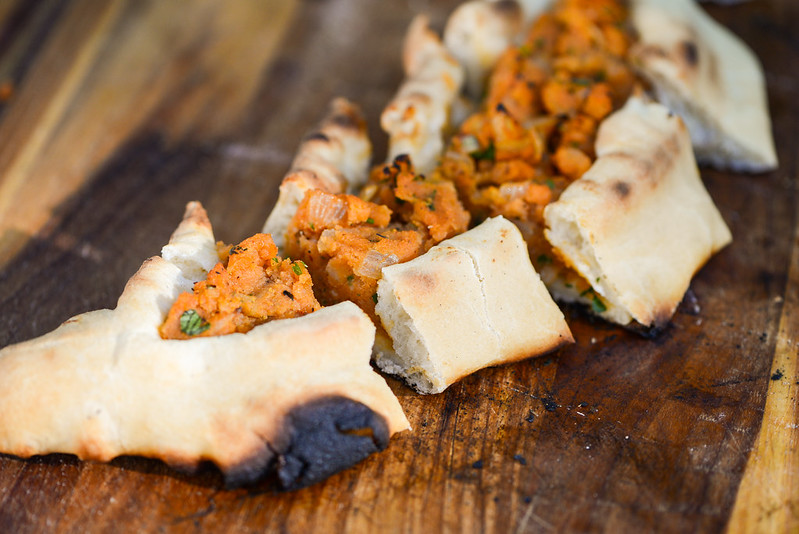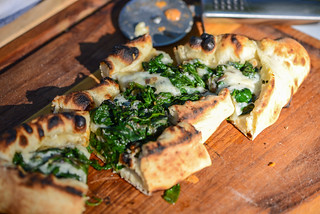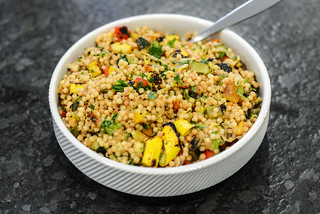Patatesli Pide
As much as I love my KettlePizza, it does take about an hour to get it fully fired up and ready to cook with, then extra time to dissemble and put away. That added time and maintenance translates to me not using it nearly as much as I'd like to. When I do get it going, I try to make the best use of that blazing hot fire as possible. So when I decided to try my hand in making pides—Turkish stuffed flatbreads—I went for broke and did three distinct recipes. The original inspiration was a minced lamb pide that turned out incredible, but my second variation, a spiced potato or patatesli pide, turned out equally great.
I've had patatesli pides before, and could never quite put my finger on exactly what made them so different and tasty. When it came time to devise a recipe myself, it didn't take more than a simple search to find the answer though—aci biber salcasi, Turkish hot pepper paste. This paste is made from sun-dried red hot chili peppers that are then ground together. I worried I wouldn't be able to find it in my hometown of Durham, but lo and behold, I saw it sitting my local Asian mega-mart, resting next to the sambals and srirachas that are more expected in that venue.
The pepper paste does a lot of the heavy lifting in giving the mashed potatoes their semi-spiciness and orange color, but I put together a seasoning mixture that I hoped would further deepen the flavor and more closely match the patatesli pides I've encountered previously. This had me adding tomato paste for both color and acidity, cumin for earthiness, and urfa pepper flakes for an additional pepper layer that was a little sweet and smoky.
Procuring the ingredients was the hardest part of making this filling, the actually cooking was familiar from making other mashed potato connotations in the past. It started with covering a pound of peeled and chunked russet potatoes with cold water, then bringing the water to a boil over medium-high heat. I then let the potatoes simmer until they could be easily pierced with a paring knife—about 15 minutes—before draining them and setting them aside.
Next I melted butter in my now empty dutch oven and sautéed a finely chopped onion until it was softened, but not browned. Then I added in my seasoning mixture and let it cook until it was fragrant.
I added the potatoes back in and started mashing. I only lightly mashed them, working them enough that they were mostly broken down, but still had a few larger potato bits in there, trying to mimic the texture I've come across in patatesli pides.
Finally I stirred in fresh parsley and seasoned the mixture with salt and pepper to taste. When I was done, I was pretty damn happy with this filling—it had both the unique pepper flavor and semi-chunky texture I was after.
Now it was time to turn that great creation into an even tastier pide. To do this, I rolled out one ball of dough—I covered the details of making the dough in a previous pide post—into a long oval and spread a generous amount of the filling along the center.
I left the edges clear so I could fold them over and pinch the ends together to make the ubiquitous pide formation. With the pide ready for the oven, I transfer it to a pizza peel and slide it into my PizzaKettle running at around 950°F.
It cooked up in almost no time—about three minutes total. That was even faster than I was expecting, which led to my burning part of the crust at the bottom, but no worries, I think a little char on a crust is a good thing.
The final pide was almost exactly what I going for. The crust was nice and crisp with just a little chew to it, and the filling was pretty spot on—it had a great earthy heat that was distinctly Turkish. The potatoes were an excellent delivery method for this layered spice, one that was so good that my guests actually started eating the potatoes on their own. Still, I recommend putting them in pide form, which made it totally worthwhile to get that KettlePizza going.
